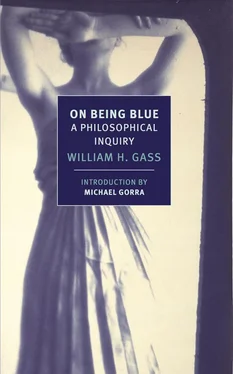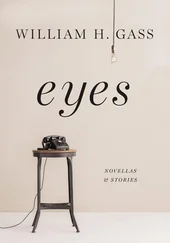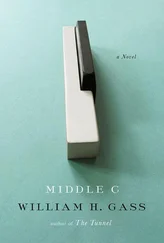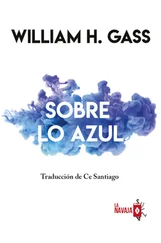Long unused. Still, the disappearance from literature of words and subjects (or their appearance there) simply because writers and readers have strong feelings about them is never an aesthetically promising cause. And the principal difficulty with using sexual material in literature is that the motives of all concerned are usually corrupt.
Because of the values we place on sexuality in life, because of the terrible taboos which surround it, the endless lies, the forlorn wishes, the sad fantasies we wind around it like gauze about a wound (whether these things are due to the way we are brought up, or are the result of something graver — an unalterable quality in our nature), everyone’s likeliest area of psychological weakness is somewhere in the sexual. Writers, whose work is actually an analogue anyway, are still more susceptible to the blue disease, so that even those whose mastery of their medium is otherwise incontestible will — with a serious air — plait flowers in their hero’s pubic hair and stumble over a little fornication like a toddler climbing stairs. Any author’s wisdom here consists of the correct assessment of his own weaknesses and the discovery of technical ways to circumvent them. Not an enterprise for amateurs. Colette used the blue paper she wrote on to shade her writing light… to shine bluely through the curtains at pedestrians crossing the Palais-Royal a notice of her presence day and night.
But we are perfectly familiar with these things.
Those dressed in blue
Have lovers true;
In green and white,
Forsaken quite .
Touch blue,
Your wish will come true.
If you love me, love me true,
Send me a ribbon, and let it be blue;
If you hate me, let it be seen,
Send me a ribbon, a ribbon of green.
It is intriguing to wonder whether the difficulties children have with color, the quickness with which they pick up forms and functions and learn the names for bye-bye, truck, and auntie, yet at a late age (even five), without a qualm, call any color by the name of any other, aren’t found again in the history of our words, for oysters could not be oozier than these early designations. Blue is blue or green or yellow: what the hell. Or so it seems. Colors flood our space so fully that there isn’t any. They allow us to discriminate among otherwise identical things (gold and green racing cars, football teams, jelly beans, red- brown-blond- and black-haired girls); however, our eye is always at the edge, establishing boundaries, making claims, so that colors principally enable us to discern shapes and define relations, and it certainly appears that patterns and paths — first, last, and in between — are what we want and what we remember: useful contraptions, useful controls, and useful connections.
Yet the pig in the pigment is missing. Well, what do we need with all that fat? Our world could be gray as the daily paper and we’d not miss much in the way of shapes and sizes. An occasional bluebird might be overlooked fleeing extinction through a meadow — so what. As much an afterhue as afterthought, colors came to the movies as they came to the comics, and there they remain — surreal in their overlays — like bad printing. Hoopla is hoopla however it’s hollered. Tinting that weed green or its trailer silver would not have improved my naked girl’s gray and white image. No. Who cares for color in a world of pure transmissions?
Children collect nouns, bugs, bottlecaps, seashells, verbs: what’s that? what’s it doing now? who’s this? and with the greed which rushes through them like like rain down gulleys, they immediately grasp the prepositions of belonging and the pronouns of possession. But how often do they ask how cold it is, what color, how loud, rare, warm, responsive, kind, how soft, how wet, how noxious, loving, indiscreet, how sour?
Measures, not immersions, concerned our sciences almost from the beginning, and we were scarcely out of the gate before Democritus was declaring fiercely that ‘color exists by convention, sweet by convention, bitter by convention; in truth nothing exists but the atoms and the void.’ Although Anaxagoras had already claimed that we see nothing but light reflected in the pupil of the eye, the real organ of perception, all along, was Mind. It was the soul that saw for Plato, too, yet color was a dissembling cosmetic, the tinted marble and the gilded thigh, perfume for the iris, spice for spoiled meat, and when the mind put a public face on, as Protagoras might, or Gorgias did, in pursuit of persuasion, it painted itself like an old whore for the light, and with one finger gooey from the color pot circled its sockets with the pale cream and gray-blue grit of the shaven pubis, smearing on each cheek a paste which matched the several pallors of debauchery, though these undertoning blues and violets were startled sometimes by spots of cantharidian red, or else with the whole hand it spread a melancholy which gently purpled the spent body like a bruise.
For Democritus, shape was the principal cause of color, especially the shape of what might be considered the reflecting or emitting surface: white atoms were smooth, black jagged (shadow-casting, Theophrastus suggests); though his account is hardly consistent since the atoms of red are compared to those of flame and simply said to be larger, while the ones which produce green are made, like the statues of Henry Moore, of the solid and the void itself — thing and no thing — which, according to his own teaching, is the way the whole of reality is put together and not just the greenish part. Moreover, Democritus omitted blue from the list of his primary colors at the cost of our admiration.
On the other hand, Epicurus claimed that the positions and arrangements of the atoms were as important as their isolated shape, and that, in effect, color’s cause was molecular, an opinion more correct than he could ever have imagined, since hue is not the simple effect of a stimulus, it is the actual perception of a whole series or set of relations.
In any case, as Galen observed, very early the philosophers kicked quality out of science. Aristotle insisted that qualities were accidents and could not be a part of essence. Lucretius faithfully followed the lead of Epicurus. Galileo was equally concerned to reserve physics for mathematics, and, as we know, Descartes delivered, as a Frenchman should, the coup de grâce .
The campaign against quality was a campaign against consciousness, because that’s where quality was thrown like trash in a can. Although Descartes’ public purpose was to certify faith, his successful secret purpose was to clean up thought for the surgeries of science. For the most part, then, qualities were removed from the external world and given over to that same soul which was once said merely to perceive them, as though the telescope with its lenses had swallowed the stars. It is important to notice, however, that Plato’s complaint about color was not that it was illusory whereas the physical world which it concealed was real. No, for him the dancer was as deceitful as her veils. The intercourse of eye and object, which involves the voluptuous intertwining of two rays (these were his own blue metaphors), engenders twins: the eye is filled with seeing (an activity), while simultaneously the object seen becomes luminous with color (a condition). Eye and sky together are then blue and its apprehension. Goethe — great pagan that he was — sounds the same note:
The eye owes its very existence to light. From inert animal ancillary organs light evokes an organ which shall become light; and so the eye learns to give light for light, emitting an internal ray to encounter that from without.
Plato’s brilliant and beautiful suggestion avoids the insoluble projection problem. Of course, in philosophy, you settle one bill only by neglecting another, a strategy which must eventually be seen to fail since all of them fall due at the same time. Nevertheless, Plato was never guilty of such unempirical foolishness as the rag-taggle of doctrines which crowded along afterward required. Once spread across the spaceless night and total nowhere of the soul, how shall the stars be got back through the skull and eye and scope into the sky again? No one has ever come close to saving and explaining the objective appearance of perception, not even Schopenhauer, whose suggestion was at least a try: namely that perception was a process in which a felt effect, in the moment of its existence, was nevertheless always experienced as if it were occurring in the space of its cause, and that understanding was simply the ability to experience any such effect farther and farther back along the chain of its conditions or its grounds.
Читать дальше












